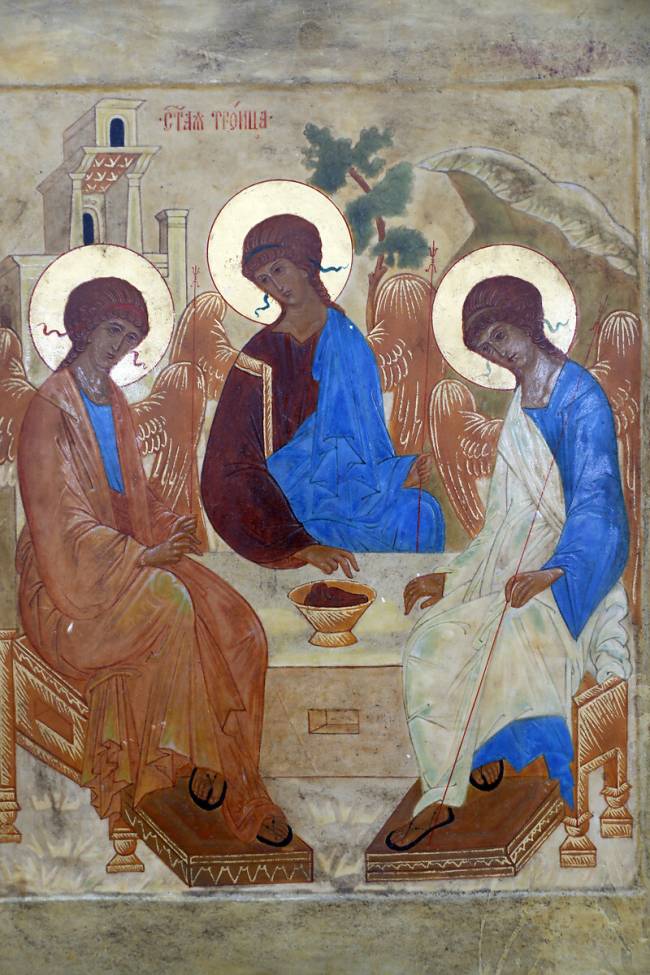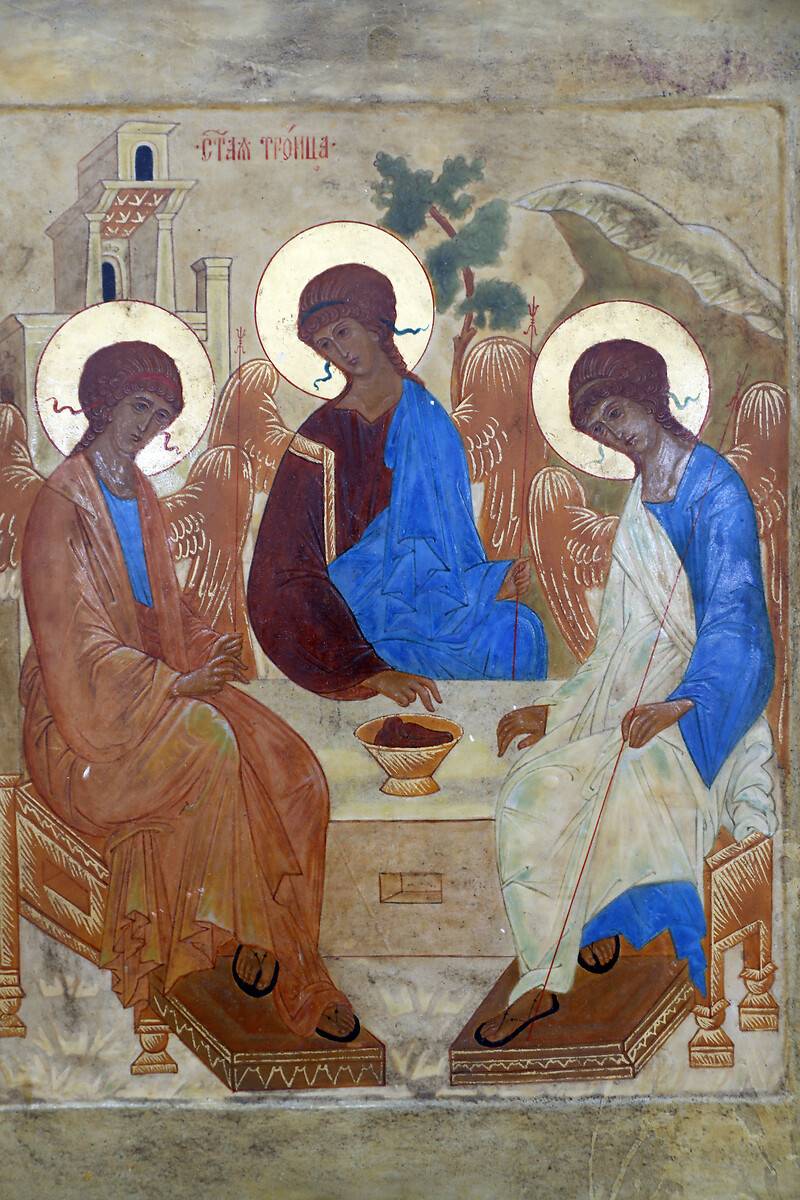Shop art print and framed art La Trinité by Andrei Roublev
Customise
Your art print
La Trinité OF Andrei Roublev
La Trinité
The story of The Trinity Icon by Andrei Rublev, a painting steeped in history and spirituality
Probably born around 1360-1370, Andrei Rublev was a monk, considered to be one of the greatest painters of Russian religious icons. The Trinity Icon, also known as The Hospitality of Abraham, is a major work by the medieval Russian painter. Generally dated between 1410 and 1427, this painting has survived the centuries, marking its importance in the history of Russian and Christian art.
Initially commissioned to be placed above the altar of the Trinity-Serge Cathedral in Serguiev Possad, after it was rebuilt following the war against the Mongols, it is now preserved and exhibited in Moscow's Tretyakov Gallery.
Visual and symbolic description of The Trinity icon by Andrei Rublev
The Trinity icon depicts the three angels who visited Abraham and Sarah in the Mambre Wood. This biblical scene is translated by Rublev as a mystical allegory of the Holy Trinity: the Father, the Son and the Holy Spirit. The painting, 142 cm high and 114 cm wide, is painted using the traditional technique of tempera on wood panel, using natural pigments mixed with egg yolks.
The symbolism and richness of the details present in this painting are numerous: the angel of the Son in the centre represents Christ incarnate in his divine dimension, the two other angels representing the Father and the Holy Spirit, the tree, symbol of eternal life; the cup on the table, an allusion to the Eucharistic sacrifice; the angels' staffs, recalling their status as divine messengers. The looks exchanged by the angels and their gestures give this work a profound and solemn spiritual dimension.
Composition and symbolism of The Trinity icon by Andrei Rublev
Roublev articulates his composition around a vertical axis in the form of an inverted triangle, typical of Byzantine art, symbolically inviting the eye to turn towards the centre of the icon, where the cup is located. It thus invites the viewer to enter into the mystery of the Trinity. The soft, harmonious colours lend the whole a soothing atmosphere.
The role of Andrei Rublev's The Trinity Icon in the artist's career
The Trinity is a crucial stage in Rublev's career and marks a decisive turning point in the evolution of Russian iconography. Several major innovations can be distinguished in this painting compared to traditional icons.
In fact, Rublev uses simple, uncluttered forms to depict the figures, unlike Byzantine icons, which tend to emphasize the complexity of drapery and detail.
.
With The Trinity Icon, Rublev also demonstrates a desire to create a work imbued with mysticism and spirituality. The soft, harmonious colours and the stylised depiction of angels reflect this spiritual quest that characterises the artist's work as a whole.
Although the subject of The Trinity is clearly identifiable and comprehensible, Rublev leaves a major place to the balance between abstraction and figuration. The way in which this painting is treated leaves an important place for abstraction and symbol.
Thus, by creating an icon combining abstraction and figuration and developing his own style, Andrei Rublev succeeded in making his mark on his time and establishing himself as one of the essential painters of the Russian tradition.
This artwork is a painting from the middle ages period. It belongs to the icon style.
Find the full description of La Trinité by Andrei Roublev on Wikipedia.



































